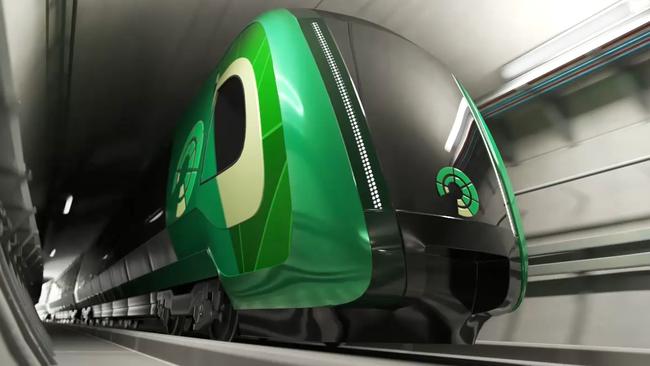James Campbell: Federal budget does little for Victoria
Budget assumptions are always hit-and-miss, but in today’s uncertain times they could perhaps be forgiven. Yet, if you take a deeper look at Victoria’s history post-recession, you'll see a trend this year’s budget has not accounted for, writes James Campbell.

James Campbell
Don't miss out on the headlines from James Campbell. Followed categories will be added to My News.
In the traditional way of judging these things — dollars for projects on the ground — this budget appears to do little for Victoria. That won’t have been the first time you’ve read that on the morning after a federal budget and I am sure it won’t be the last.
It won’t be the first time you’ve woken up to read NSW is getting more than twice Victoria’s infrastructure spend either.
Nor will it surprise you to learn the $1.1bn we’re getting is going to places Daniel Andrews wants it to go, such as the upgrade of the Barwon Heads road — which was actually his promise at the last state election.
The money for the next stage of upgrades to the Shepparton and Warrnambool lines is welcome but there’s no sign of any serious money yet for Geelong fast rail — a promise at last year’s federal election.
Given we’re still waiting to learn the route and timetable for the airport rail link, which was meant to be done and dusted by now, we shouldn’t be surprised.
In other non-news, the commonwealth’s promise to fund the government portion of East West Link in its entirety remains on the table, where it will stay as long as Dan is around.
The state rejected the — belated — offers of federal money for Melbourne Metro and the feds aren’t too keen on the Premier’s beloved Suburban Rail loop.

But even if Canberra was as attached to it as the Premier, whatever else it is, it’s not shovel-ready, so this is where we are at, I am afraid.
The good-bad news is that because Victoria’s economy has been belted harder than the rest of the country — just how much harder won’t be clear for some time — we can expect to continue to soak up the lion’s share of the welfare payments the commonwealth has extended since the start of the pandemic. So in that sense this is the most Victoria-centric budget ever delivered by a federal treasurer.
Not that anyone is cheering, of course. Budget assumptions are always hit-and-miss but in a situation where we have no idea if and when a vaccine is going to allow normal life to resume, we can be forgiven for treating them as guesstimates. Especially as they apply to Victoria, where we can’t even say for sure how long we are going to be in lockdown let alone what the economy is going to look like.
What makes predicting Victoria’s growth rate so hard is the extreme dependence of our economy on immigration.
This budget assumes net foreign migration returns to close to pre-COVID levels by 2023-24 and that the bulk of them will continue to come to Victoria.
It also assumes that after a couple of years of net interstate emigration, Victoria will again be attracting people from elsewhere in Australia.
Both assumptions might be right, but from where we are sitting at the moment they border on the heroic.
Firstly, because it would be a brave federal government indeed that reopened the gates in to an economy with high unemployment.
But more importantly, Victoria’s history suggests its recent popularity might not last. In the 1890s, when the colony of Victoria was belted by recession, it lost population. In the 1930s, when it was belted by the Great Depression, it lost population interstate. In the recession of the early 1980s, it lost population interstate. In the recession of the early 1990s, it lost population interstate.
MORE BUDGET NEWS
YOUR 5-MINUTE GUIDE TO THE BUDGET

